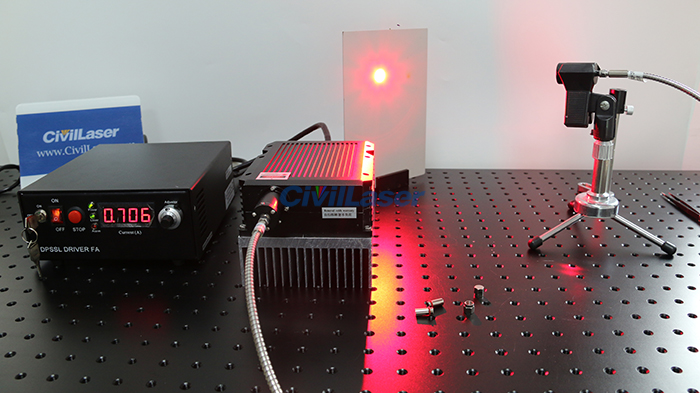The future of space communications is rapidly changing due to the advancement of technology in satellite communication. Satellites play a vital role in our daily lives, from GPS navigation to weather forecasting, and even global communication. However, these satellites require a robust and reliable communication system to operate efficiently. One such technology that is gaining traction in the satellite industry is fiber-coupled laser modules.

Fiber-coupled laser modules have been in use for several years, transmitting data at high speed over long distances with minimal signal loss. These modules are now being integrated into satellite communication systems, providing higher bandwidth and faster data transfer rates to ensure more efficient communication between ground stations and satellites. Additionally, this technology's lightweight and compact nature makes it easy to integrate into small satellite platforms, making it an ideal option for small satellite communications.
One company that has been at the forefront of fiber-coupled laser module development is Sheaumann, a Massachusetts-based technology company. Sheaumann has been developing lasers and laser-based solutions for over fifteen years, specializing in the design, development, and manufacture of high-power laser diodes. Since 2015, Sheaumann has been working with Tesat-Spacecom, a German company specializing in space communications, to create a fiber-coupled laser module that meets the extreme demands of space-based applications.
The project's main objective was to enhance Sheaumann's flagship 2-pin module to operate efficiently in Low Earth Orbit (LEO) and Geostationary Earth Orbit (GEO) satellites' extreme conditions. Sheaumann's 2-pin module is a high-power laser diode that is widely used in a variety of applications, including medical systems, industrial applications, and research labs. With the collaboration with Tesat-Spacecom, Sheaumann has modified its module to withstand the harsh radiation environment, temperature fluctuations, and vacuum conditions of space.
The fiber-coupled laser module developed by the partnership has successfully been deployed in several satellite communication systems, including the European Data Relay System (EDRS), which is a European Space Agency (ESA) space data highway system. The EDRS uses optical communication technologies to provide high-speed data transfer services between Low Earth Orbit (LEO) observation satellites and ground stations. The system has been operational since 2019 and has significantly improved the speed and reliability of data transfer from Earth observation satellites.
The adoption of fiber-coupled laser modules in space communications is expected to grow significantly over the next few years. This technology offers several advantages over conventional communication systems; it can transfer data faster, has higher bandwidth, and can operate over longer distances with minimal signal loss. The development of compact and lightweight modules also makes it possible to use them in small satellite platforms, which will soon be more prevalent.
Overall, the integration of fiber-coupled laser modules in the satellite communication industry is a significant step forward in providing a more efficient and reliable system to transmit critical data. The collaboration between Sheaumann and Tesat-Spacecom demonstrates the commitment of the industry to innovate and develop new technologies to overcome the challenges of space communication. The benefits of fiber-coupled laser modules will continue to make space communication more efficient and reliable, supporting the growth of the industry and the use of satellites in everyday life.